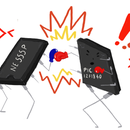Introduction: Electromechanical Steam Engine
The Concept - To Inspire
I strongly believe the future of transport will closely resemble the late Victorian era with multiple different types of power plants being used to propel various different types of transport. These prime movers could be electric motors, air engines, modern steam engines, gas turbines etc. These power units could be work in isolation or as a hybrid of two or more units. Reciprocating engines, such as the internal combustion engine, will surely be part of this mix however I believe the current configuration is due for an upgrade as the basics haven't changed for a very long time. For reciprocating engines to progress the valve system will need to change to be more efficient and more adaptable. In my opinion, for this to be achieved electromechanical valve actuation will need to be used in a camless engine. This will give three massive advantages to the engine:
1 - Infinitely variable valve timing.
2 - Reduction in parasitic loses.
3 - The chance for the engine to be multifunction (the cylinder could be used to pump air or be driven by air).
I decided to do this Instructable to inspire the upcoming engineers to continue with radical development of all reciprocating engines!
Step 1: The Design
I decided to develop a air / steam driven engine basically because it is cheap, simple, safe and accessible.
The engine basically works as follows:
1. The flywheel acts as both a cam and fly wheel.
2. Just before Top Dead Centre (TDC) it operates the micro switch via the raised profile.
3. The micro switch causes current to flow to the inlet solenoid valve and closing the exhaust solenoid valve.
4. Air flows through the inlet valve pressurising the cylinder.
5. The piston moves down causing the crank and flywheel to rotate.
6. At just before Bottom Dead Centre (BDC) the raised profile has completely passed the micro switch causing it to change state therefore opening the exhaust solenoid valve and closing the inlet solenoid valve.
7. Inertia causes the flywheel to keep rotating and the piston passes TDC and the cycle starts again.
Full designs are shown on the drawings attached - feel free to modify and / or share.
Step 2: The Construction
To make an engine like mine you will need the following:
Tools:
- Lathe - sorry but there's no getting away from it, you'll need to do some turning!
- Bench Drill
- Drill Bits
- Saw - for cutting metal, plastic and possibly wood.
- A set of taps and dies.
- Measuring equipment such as a steel rule, callipers etc.
- Spanners, screw drivers and Allen keys.
Materials
Stock Aluminium for the piston, cylinder, crank wheel and fly wheel.
Engineering plastic (I used 12mm thick) but I'm sure wood will be ok.
Micro switch with three terminals (change over)
1/4" BSP Solenoid valves x 2 - I bought these off ebay from a chap in China.
Nuts, bolts, washers grub screws etc.
12 volt battery.
Automotive cable.
Tip = When I make pistons in the lathe I don't use a centre, this is because the tool pressure gets less as it moves towards the free end of the work creating a very very slight taper. You can then "fit" the piston to the cylinder with the bigger end of the piston at the base. You then don't need piston rings.
I strongly recommend you look at the design and see if you can improve it or make it with tools and materials more easily available to you.
Step 3: Give It a Go!
In this step you just need to put it all together and give it a go.
For me this was where the fun started.....
I had to play with the cam timing to get it to work, I had to keep reducing the raised section of the cam due to the lead-in caused by the micro switch (this caused the timing to be longer than I expected).
I also found that the micro switch had to operate just before TDC to actuate the inlet valve, I think this is because of a couple of reasons. It could be that it takes time to build up pressure in the cylinder, also I think there is a slight lag from the operation of the switch to the point at which air enters the system.
I also played with air pressures and air flows - too much pressure and the piston accelerates so fast it locks up at BDC. I found that about 2 - 3 bar was about right.
I little bit of light oil in the cylinder and on the crank also helps things along a bit.
In the end it all worked out fine!
Step 4: Conclusions and Future Development
This was a fun little project that worked better than I expected.
I was worried that the valves and micro switch would not react fast enough but they did.
I am learning to programme Arduino at the moment and I think there is loads of potential to change the cam for a sensor based system.
I think that solenoid actuated valves will be used in the future in the following ways:
1. Operating the exhaust valves on wet sump direct injection 2-stroke engines.
2. Energy recovery from 4-stroke engines in the form of compressed air, i.e. turning the engine into a compressor when breaking and using the air to then drive the engine or as a super charger.
3. Modern steam based engines.






